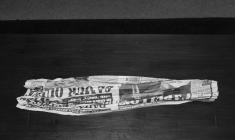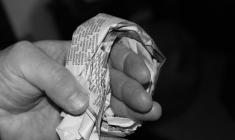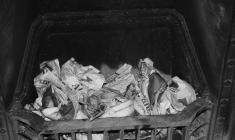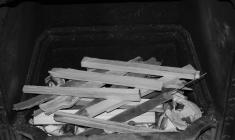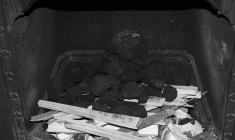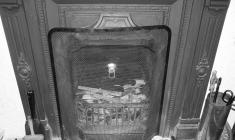Fireplaces are lovely things but do require some understanding of how they work in order to use them safely and efficiently and get the best out of them. We thought you might find the information we have provided on this page useful.
Back to topThe Fireplace, how it works and a brief glossary to help you understand
From the humble to the grand, they all work on the same principle. You light a fire in the basket or grate and as the air above and around the fire is hotter it has less density than the air in the room. Air pressure within the chimney is now lower and the smoke is drawn up along with any combustion gasses as air from the room is sucked in. It’s as simple as that.
-
Basket (1)
A catch-all name to cover a stand-alone receptacle in which the fire is lit. In their most basic form they are a simple iron or steel basket while at the other end of the spectrum they have fancy wrought iron work to impress visitors.
-
Backet (2)
A container for keeping logs in ready for burning - not too close to the fire though!
-
Bird guard
A device, usually wire, fitted to the chimney pot to stop birds either falling down the flue or building nests within the pot.
-
Child Guard
A metal cage fitted around a fire to prevent children from getting too close and getting burnt. Should not be used to dry clothes on because of the danger of them catching fire and spreading to the room. Should not be confused with fire or spark guards.
-
Chimney
The structural column within which is the flue. Each fire within a house has its own flue within a large chimney stack.
-
Chimney Stack
The freestanding portion of the chimney above the roofline.
-
Coal Scuttle
A container for storing a limited amount of coal in for immediate use. Either tubular with handles for tipping coal carefully onto the fire or of the wooden box variety with lid and metal insert.
-
Companion Set
Usually kept on the hearth and comprising of a poker, brush and shovel, though some also have tongs for picking up hot coals or wood or adding new fuel to the fire.
-
Constructional Hearth
The non-combustible base beneath the fire that protrudes into the room at floor level.
-
Cowl
Fitted to the top of a chimney at the termination point and used either to remedy specific problems or for certain fuel types.
-
Decorative Hearth
The non-combustible part on top of the Constructional hearth. Usually tiled with an integral of additional surround to prevent hot coals or embers rolling into the room.
-
Draw
The ability of the fire to take the smoke and gasses up the flue efficiently. Poor draw may result in smoke and gasses entering the room. See also ventilation.
-
Fireback
Found behind the basket or grate, usually firebrick or metal (usually cast iron though steel has been found in use). The fireback aids in reflecting heat back into the room rather than up the flue as well as offering protection to surrounding brickwork.
-
Fireguard
Primarily used to prevent sparks from getting out and setting fire to carpets and furnishings though also useful in preventing pets and children from getting too close.
-
Flue
The internal area or passage of the chimney. This is how the smoke escapes into the atmosphere. The height affects its efficiency as a lack of height will not create the up draught required to draw the smoke and gasses safely away from the room.
-
Grate
Similar to a basket but usually an integral part of a fireplace
-
Lintel
In its most basic form a lintel supports the brickwork above the fireplace opening. Modern lintels are made of steel or reinforced concrete though earlier ones are made from a single piece of stone, usually granite though sometimes slate has been used.
A derivative is uses to form an inverted funnel to guide the smoke and gases into the flue proper.
-
Mantel
Usually interpreted as the shelf above the fireplace (mantel piece)but can be used to describe the complete decorative frontage to a fire more commonly described as the fireplace.
-
Poker
A metal rod used to lift burning coals gently to allow air in and aid combustion. Should never be used aggressively as hot embers or coals may fly out or damage to the fireback or grate may occur if struck.
-
Spark Guard
A fire guard with a finer mesh to prevent even small sparks from escaping.
-
Termination Point
The top of the chimney, usually with a chimney pot fixed in place with mortar.
-
Throat Plate
A metal cover within the fire behind the mantel that can be pulled shut when the fire is not in use. Not all fires are fitted with them.
-
Ventilation
Good ventilation is required to allow the fire to work efficiently but more importantly to stop the build up of dangerous and potentially fatal gases within the room or building. This is one of the reasons why a smoke test is carried out after sweeping. With a lot of houses now fitted with double glazing, sealed doors and draught-proofing the ability of a fire to draw a constant supply of air from the room is restricted. If problems occur then airbricks in an external walls may be required or internal/external vents may also have to be installed.
Laying a Fire ready for lighting
In this age of centrally heated houses the art of laying a fire has almost, but not quite, disappeared. The reasons for having an open fire are many and varied but what needs to be understood is that good preparation will give better results and cut disappointment and heartache to a minimum. There is nothing worse than the expectation of a cheerful fire and the despondency of a smouldering heap of coal and damp wood that fails to respond and burst into life.
So here it is, the almost but not quite foolproof method of laying a fire. Take your time and do it properly. The principles are the same for wood burning stoves though with them you should close the doors and open the vents after lighting but always follow manufactures instructions on lighting if known.
-
Make sure the throat plate is open (see above).
-
Empty the ash tray. This aids ventilation and draw.
-
You will need either firelighters (expensive) or paper and dry sticks (kindling) if you prefer.
-
Coal or dry logs.
-
If using firelighters then follow the instructions on the packet or…
-
Step one
Take a sheet of newspaper in both hands and crumple it into a long stick.
Place it in the grate and continue until there is a layer across the base of the grate.
If you just crumple the sheets and place them in the grate there is a greater amount of air within it which will result in a quicker burn and the likelihood that the wood may not catch fire. Tighter paper has a slower burn and allows the wood to catch fire.
-
Step two
Lay the sticks on top of the paper in a criss-cross fashion allowing the flames from below to get amongst them. Don’t stint on the wood. More fires fail because of a lack of kindling than any other problem.
Your kindling should be dry and not too thick. The idea is for the paper to light the wood and when the wood has caught to light the coal or the logs.
-
Step three
On top of the wood place a loose layer of coal using tongs if required to place them.
-
Step four
Make sure the fire guard is to hand and put a light to the paper at two or three points along the front. Long stemmed matched are preferred to prevent burning of fingers. Once you are sure it has taken, place the fire guard in front and watch. As the paper burns the fire will drop slightly but by then the wood should be on fire and starting to heat the coal.
Once the coal has caught fire you may add a little more but don’t kill it under a mountain of the stuff. A little, often, is the way to succeed.
If you are burning logs then the same principle applies. Small sticks, bigger sticks, small logs, bigger logs, simple! BE PATIENT.
If it does start to struggle try adding some more kindling rather than coal or logs.
-
Remember!!!!!
- Never leave an open fire unattended unless you have placed a fire/spark guard in front of it.
- Never leave children or pets near an open fire.
- If you have children then install a child guard that is secured to the wall either side of the fireplace.
- Keep clothes away from fires and never dry clothes on a child guard or on a clothes horse in front of an open flame.
- Make sure you have your chimney swept regularly. A clean chimney is a safe chimney.
For information on problems that can occur with your chimney please see our Problems page.
Back to top
